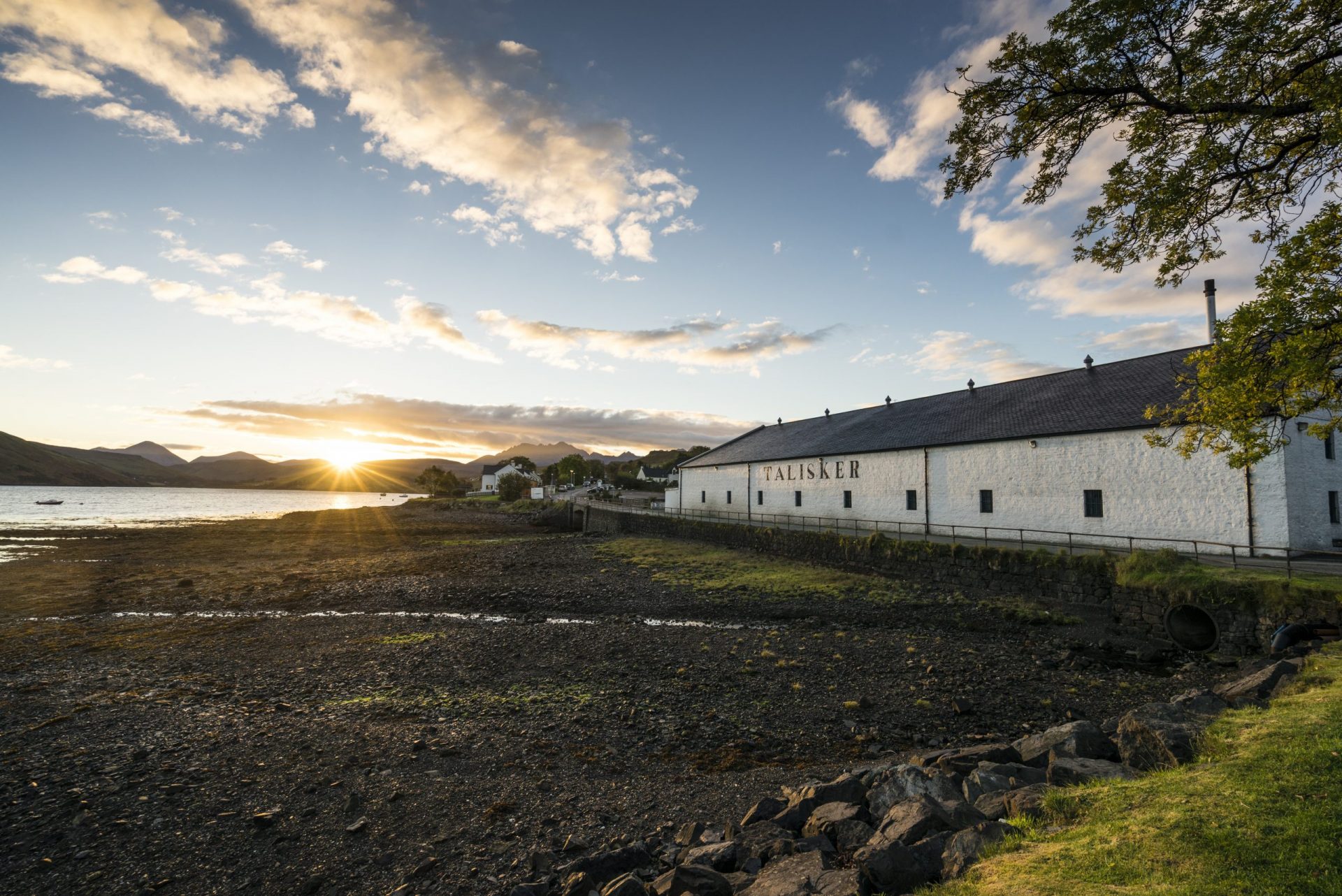
25 Jun Talisker Whisky The King O’Drinks
It probably doesn’t get more photogenic than this. The pristine white distillery of Talisker contrasts beautifully with the rugged mountains and rocky coastline of the Isle of Skye. The west coast of Scotland is rugged and the whiskies are heavy. Talisker is no different, but it does have a very unique character and history. In 1825, Hugh and Kenneth MacAskill, nephews of the landowner and descendants of the MacLeod Clan, took up a lease on Talisker. It was the time of the industrial revolution and landowners throughout England and Scotland were busy maximising the yield of their land. In the case of Talisker, this meant using the land for sheep. The inhabitants were allowed to settle in the new towns of Carbost or Portnalog to work in the new distillery, which opened in 1831. The alternative was to leave the island to work in the colonies. So you could also say that the capitalist system is responsible for the abandoned impression of Skye. 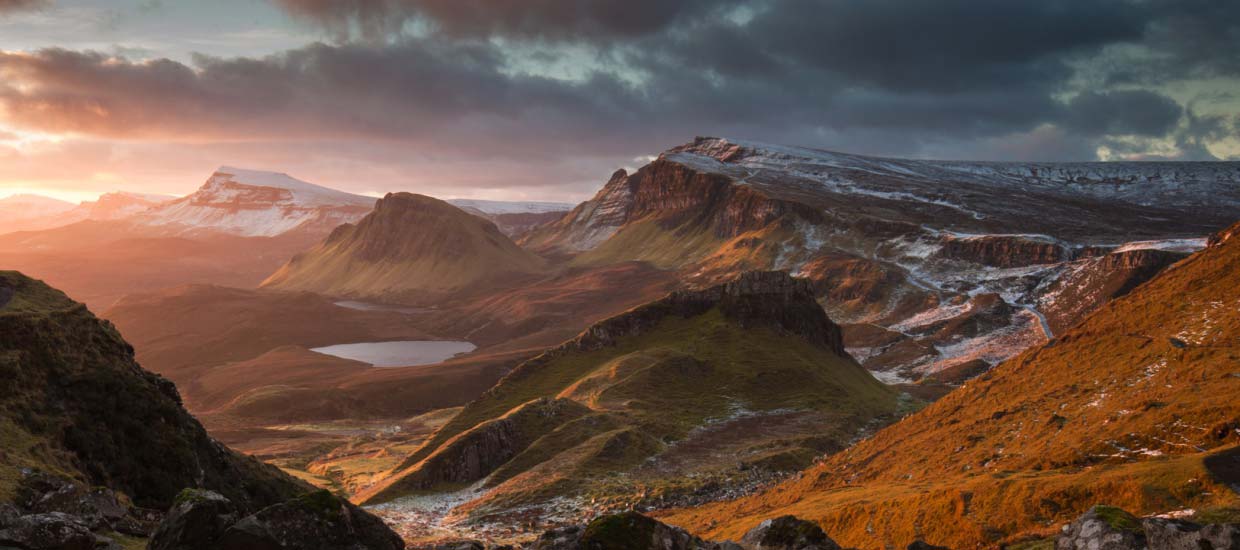 Now this was common practice among landlords at the time and fortunately karma intervened. When whisky consumption dropped dramatically in the mid 1800s the distillery went bankrupt. A tumultuous few decades followed, with various owners and very variable success. At the outbreak of WWI the distillery came into the hands of John Walker Sons Ltd who still own the distillery today, in the form of Diageo. Talisker whisky has always had a very good reputation. So good in fact that the Scottish poet Robert Louis Stevenson called it The King O’Drinks. In 2001 I was on a tour of Egypt with family and a cousin of mine had brought a bottle of Talisker with him. I hardly drank any whisky at the time, let alone single malt, but a glass of Talisker every evening, of course with a few drops of water, is for me intertwined with the pyramids. The peaty taste, with that iodine-like aftertaste, so typical of this single malt. I heard somewhere at that time that the barrels were stored in semi-open warehouses, so that the elements could have their influence here, especially the saltiness of the sea. This is of course not true, the warehouses are closed, but the influence of terroir, so the local circumstances, could contribute something to the final taste. After all, the whisky reacts with the air and the barrel for at least 8 years. But what has even more influence is the taste of the barley, the fermentation process and the distillation. And the water, which is used from 21 different sources around the distillery to make the whisky. Soft water, because it flows over organic material. Indeed: peat.
Now this was common practice among landlords at the time and fortunately karma intervened. When whisky consumption dropped dramatically in the mid 1800s the distillery went bankrupt. A tumultuous few decades followed, with various owners and very variable success. At the outbreak of WWI the distillery came into the hands of John Walker Sons Ltd who still own the distillery today, in the form of Diageo. Talisker whisky has always had a very good reputation. So good in fact that the Scottish poet Robert Louis Stevenson called it The King O’Drinks. In 2001 I was on a tour of Egypt with family and a cousin of mine had brought a bottle of Talisker with him. I hardly drank any whisky at the time, let alone single malt, but a glass of Talisker every evening, of course with a few drops of water, is for me intertwined with the pyramids. The peaty taste, with that iodine-like aftertaste, so typical of this single malt. I heard somewhere at that time that the barrels were stored in semi-open warehouses, so that the elements could have their influence here, especially the saltiness of the sea. This is of course not true, the warehouses are closed, but the influence of terroir, so the local circumstances, could contribute something to the final taste. After all, the whisky reacts with the air and the barrel for at least 8 years. But what has even more influence is the taste of the barley, the fermentation process and the distillation. And the water, which is used from 21 different sources around the distillery to make the whisky. Soft water, because it flows over organic material. Indeed: peat. 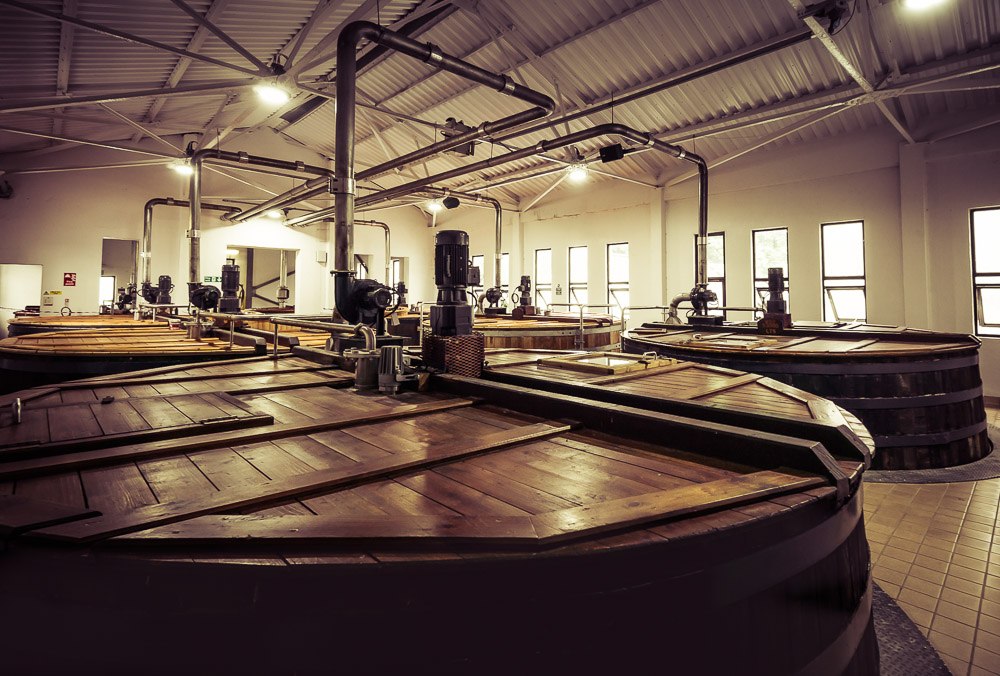 What is very characteristic of island whiskies, of course, is that peat taste. And of course, peat is almost the magic word for today’s whisky lover. But: one variety is not the other. Peat is decayed plant material that oxidizes anaerobically. In other words, without oxygen. And in every country in the world you can find peat with everywhere a different composition and therefore a different taste. You could say that peat gives terroir to and whiskey, because every region in Scotland has different types of peat, each with its own flavor. In the case of Skye, it is particularly peat moss that determines the composition of the peat, with a very loose structure. The barley is malted in Glen Ord and then shipped to the Talisker distillery, which is located in the town of Carbost. Here it is milled and fermented in wooden vats for an extended period of time. The wash then goes to the wash stills, which have a rather unusual shape (pictured below, at the back), where reflux is the magic word. You see that where the lyne arm goes down there is a tube feeding the spirit back into the wash still. This means intense interaction with the copper. Once the vapor has managed to pass the lyne arm it condenses in the worm tub. The low wines formed from this go to the spirit stills. The new make is complex, as will be the whiskey.
What is very characteristic of island whiskies, of course, is that peat taste. And of course, peat is almost the magic word for today’s whisky lover. But: one variety is not the other. Peat is decayed plant material that oxidizes anaerobically. In other words, without oxygen. And in every country in the world you can find peat with everywhere a different composition and therefore a different taste. You could say that peat gives terroir to and whiskey, because every region in Scotland has different types of peat, each with its own flavor. In the case of Skye, it is particularly peat moss that determines the composition of the peat, with a very loose structure. The barley is malted in Glen Ord and then shipped to the Talisker distillery, which is located in the town of Carbost. Here it is milled and fermented in wooden vats for an extended period of time. The wash then goes to the wash stills, which have a rather unusual shape (pictured below, at the back), where reflux is the magic word. You see that where the lyne arm goes down there is a tube feeding the spirit back into the wash still. This means intense interaction with the copper. Once the vapor has managed to pass the lyne arm it condenses in the worm tub. The low wines formed from this go to the spirit stills. The new make is complex, as will be the whiskey. 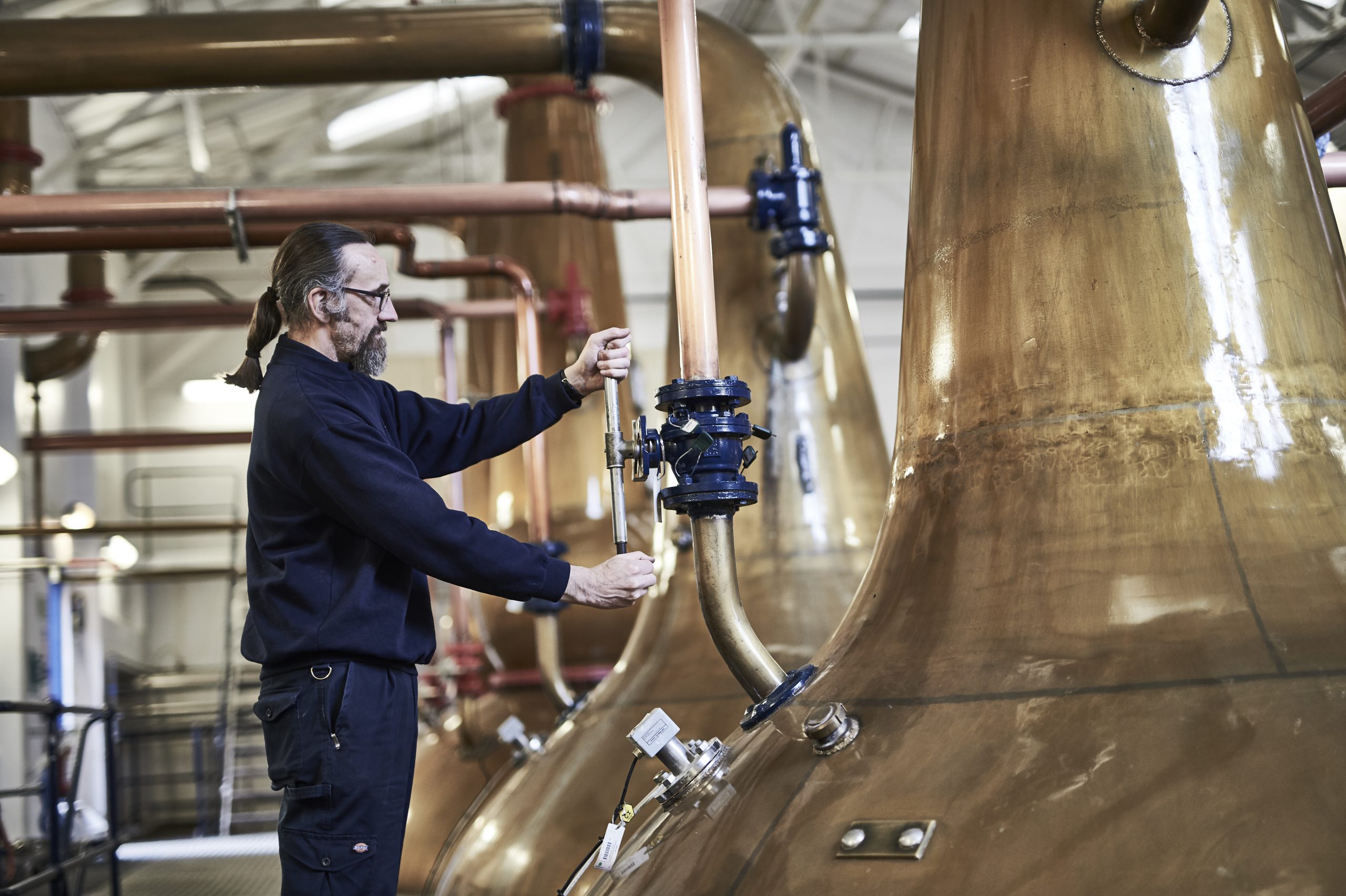 Of the final taste, it is estimated that the barrel is responsible for at least 50%. The spirit penetrates about 5 to 6 mm deep into the wood and here, under the influence of temperature differences, is pushed into or sucked back into the barrel. Through contact with wood and oxidation with the air, various new flavor compounds are formed. The longer the spirit sits in the barrel, the more compounds develop. That complexity is what makes single malt whiskey so special. Talisker is therefore known as a complex whisky, but one that can be a bit more accessible than the even more punishing Islay malts. In particular, recent additions to the range, the Skye and Storm, were made as nice entry-level malts to the Talisker range. The expressions with a year designation, the core range, count 10, 15 and 18 years and are a lot firmer in flavor. Around that, Talisker has marketed a very wide range of malts that do not have an age designation, but are made more to a specific flavor profile. The Dark Storm, for example, is really a heavier malt with much more peat. Also released annually is the Distiller’s Edition, a 10-year-old whisky that has its own character each time. This is really the signature of Craig Wilson, Talisker’s master blender and before that, of course, of its predecessors. All have in common that they have that quintessential Skye-turkey flavor, and when it has lifted a light pepper remains with sweet fruit and a briny aftertaste. Just goes to show that terroir really plays a role here. Talisker whiskies bargain at DrankDozijn, among other places. This article was created with the help of Talisker.
Of the final taste, it is estimated that the barrel is responsible for at least 50%. The spirit penetrates about 5 to 6 mm deep into the wood and here, under the influence of temperature differences, is pushed into or sucked back into the barrel. Through contact with wood and oxidation with the air, various new flavor compounds are formed. The longer the spirit sits in the barrel, the more compounds develop. That complexity is what makes single malt whiskey so special. Talisker is therefore known as a complex whisky, but one that can be a bit more accessible than the even more punishing Islay malts. In particular, recent additions to the range, the Skye and Storm, were made as nice entry-level malts to the Talisker range. The expressions with a year designation, the core range, count 10, 15 and 18 years and are a lot firmer in flavor. Around that, Talisker has marketed a very wide range of malts that do not have an age designation, but are made more to a specific flavor profile. The Dark Storm, for example, is really a heavier malt with much more peat. Also released annually is the Distiller’s Edition, a 10-year-old whisky that has its own character each time. This is really the signature of Craig Wilson, Talisker’s master blender and before that, of course, of its predecessors. All have in common that they have that quintessential Skye-turkey flavor, and when it has lifted a light pepper remains with sweet fruit and a briny aftertaste. Just goes to show that terroir really plays a role here. Talisker whiskies bargain at DrankDozijn, among other places. This article was created with the help of Talisker. 
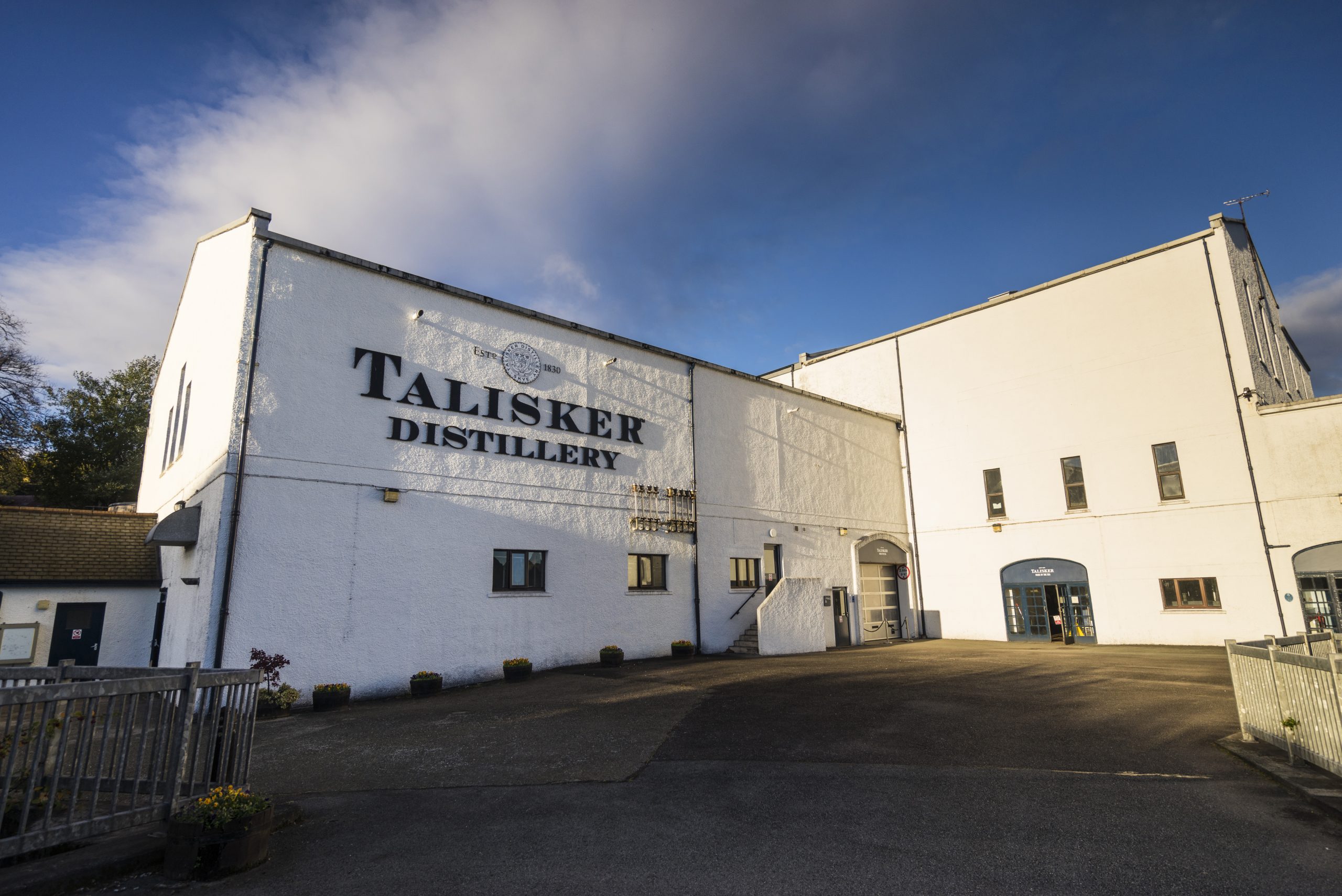



No Comments